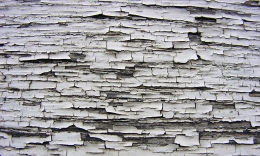
Lead-based paint is hazardous and can cause health problems. It was commonly used in homes built before 1978, when the manufacture of lead-based house paint was banned. Both exterior and interior paint produced between 1976 and 1990 may also contain lead in smaller amounts. In the U.S., contractors doing work for compensation in homes or child-occupied facilities built before 1978 must be certified to ensure they follow lead safe work practices.
You can check painted surfaces for lead by using a home lead-test kit or hiring a licensed contractor who has the proper equipment to detect lead paint on surfaces. Removing, repairing or disturbing lead paint can expose you to health risks so precautions must be taken to reduce exposure. Sometimes, leaving lead paint alone is safer than removing it, provided it is not chipping or within the reach of children.
Depending on your location (and the level of lead concentration), the debris produced from lead-based paint removal may need to be disposed of as hazardous waste. Check with your municipality for local laws/regulations regarding waste that contains lead.
U.S. EPA - Steps to Lead Safe Renovation, Repair and Painting (PDF)
You have no items in your list.
Click or tap on the My List stars on any business card or profile to add or remove organizations.